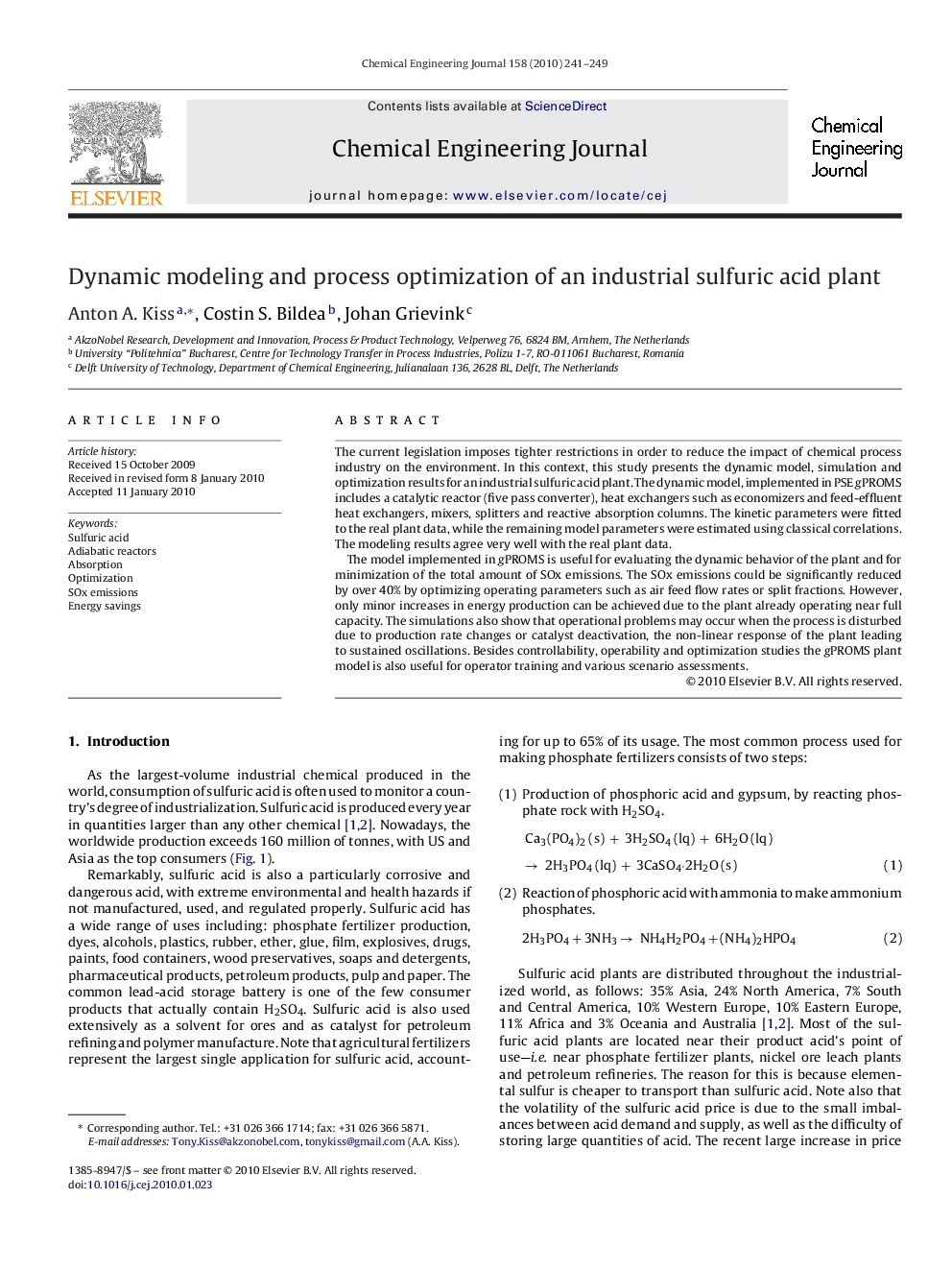| Article ID | Journal | Published Year | Pages | File Type |
|---|---|---|---|---|
| 152096 | Chemical Engineering Journal | 2010 | 9 Pages |
The current legislation imposes tighter restrictions in order to reduce the impact of chemical process industry on the environment. In this context, this study presents the dynamic model, simulation and optimization results for an industrial sulfuric acid plant. The dynamic model, implemented in PSE gPROMS includes a catalytic reactor (five pass converter), heat exchangers such as economizers and feed-effluent heat exchangers, mixers, splitters and reactive absorption columns. The kinetic parameters were fitted to the real plant data, while the remaining model parameters were estimated using classical correlations. The modeling results agree very well with the real plant data.The model implemented in gPROMS is useful for evaluating the dynamic behavior of the plant and for minimization of the total amount of SOx emissions. The SOx emissions could be significantly reduced by over 40% by optimizing operating parameters such as air feed flow rates or split fractions. However, only minor increases in energy production can be achieved due to the plant already operating near full capacity. The simulations also show that operational problems may occur when the process is disturbed due to production rate changes or catalyst deactivation, the non-linear response of the plant leading to sustained oscillations. Besides controllability, operability and optimization studies the gPROMS plant model is also useful for operator training and various scenario assessments.
